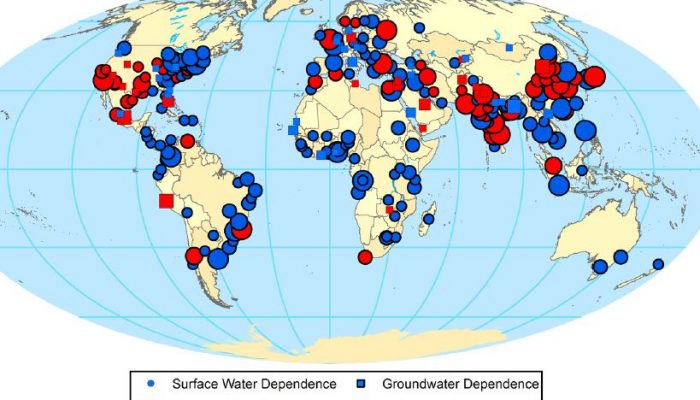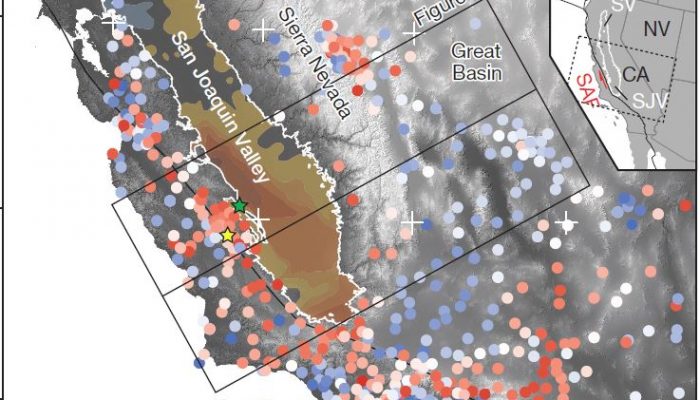From the McGill Newsroom As more people move to urban areas, cities around the world are experiencing increased water stress and looking for additional water supplies to support their continued grow. The first global database of urban water sources and stress, published online this week in Global Environmental Change, estimates that cities move 504 billion litres of water a distance of 27,000 kilo ...[Read More]
If you didn't find what you was looking for try searching again.
GeoLog
Imaggeo on Mondays: Long-lived lakes have a lot to tell
The world’s oldest, deepest freshwater lake lies in southeast Siberia: Lake Baikal. Stretching some 600 kilometres across the Russian landscape, Baikal marks what the very early stages of a new ocean – an ancient rift that cleaved the centre of Asia apart throughout the Palaeozoic, Mesozoic and Cenozoic. Today, there are still signs of tectonic activity and the rift continues to diverge 4 mm furth ...[Read More]
Seismology
Feedback to EGU
The EGU General Assembly 2014 was again a great success with 4,829 oral, 9,583 poster, and 483 PICO presentations as well as 12,437 scientists attending from 106 countries. Please find more details at: http://www.egu2014.eu A special survey has been set up to give everyone the chance to report back their feedback about this year’s EGU. For those who have not already completed the Survey plea ...[Read More]
WaterUnderground
Groundwater extraction can move mountains
Contributed by Pascal Audet (webpage or email) Next time you eat food grown in the San Joaquin Valley of California, think about this: the water used for growing them probably came from under ground. Farmers do not really have a choice because the amount of water from rain and snow can’t keep up with the needs for growing food. Every year more water is drawn out of the ground for irrigation. ...[Read More]
Four Degrees
What’s geology got to do with it? 4 – Tennis!
As part of the ‘What’s geology got to do with it?’ series, Flo takes us on a tour of the links between geology and tennis! Warning: You may not want to read this if you have no interest in Geology OR tennis…. Now the disclaimer’s out of the way, I thought it was about time I married two of my greatest loves in life, Geology and Tennis. These two interests may seem c ...[Read More]
GeoLog
Geosciences Column: Could plants be a cheap solution to soil contamination in developing countries?
There are many ways to remove contaminants from the land, but it is a constant battle for scientists to find better and cheaper ways to the job. Recent research published in Soild Earth suggests plants may present a solution – one that’s particularly promising for poor areas. Jane Robb describes the findings… Bolivia has a long and complicated mining history, going back to the 1500s. Untreated tai ...[Read More]
VolcanicDegassing
Friday Field Photo – St Vincent, 1902
Today’s field photo is by Tempest Anderson, of the ‘Roseau Dry River flowing with Boiling Mud’, a picture taken in the aftermath of the May 1902 eruptions of the Soufrière of St Vincent. The full published caption explains the origins of this boiling mud – a phenomenon we now call a lahar: ‘This is a small stream in the Wallibu Basin. When the water undermines the ba ...[Read More]
Geology for Global Development
Reminder: 2nd Annual Conference (19 Sept 2014)
A quick reminder about a date that you should all put in your calendars… Following the success of our first National Conference in October 2013, we are very pleased to announce that Friday 19th September 2014 has now been booked for our next conference… On Friday 19th September we hope to again gather over 150 young geoscientists for a one-day event, exploring further the role of geoscience ...[Read More]
GeoLog
Climate-proofing the Netherlands
Emerging Leaders in Environmental and Energy Policy (ELEEP) fosters transatlantic relations, forges dialogue, and promotes leadership across energy and environmental policy landscapes. Former EGU Science Communications Fellow and ELEEP member Edvard Glücksman reports back from the Netherlands, where citizens manage the continuous threat of climate-related devastation through a combination of creat ...[Read More]
Green Tea and Velociraptors
Your bite or mine?
It rises from the dark waters like some behemoth from the deep, and lets out a blood-curdling roar. It’s feeding time. One of the most iconic scenes from Jurassic Park III is where the long-snouted, sail-backed giant theropod dinosaur Spinosaurus emerges from underwater to try, yet again, to eat our beleaguered rabble of misfortunates. It’s always been the way these dinosaurs have been portrayed, ...[Read More]



